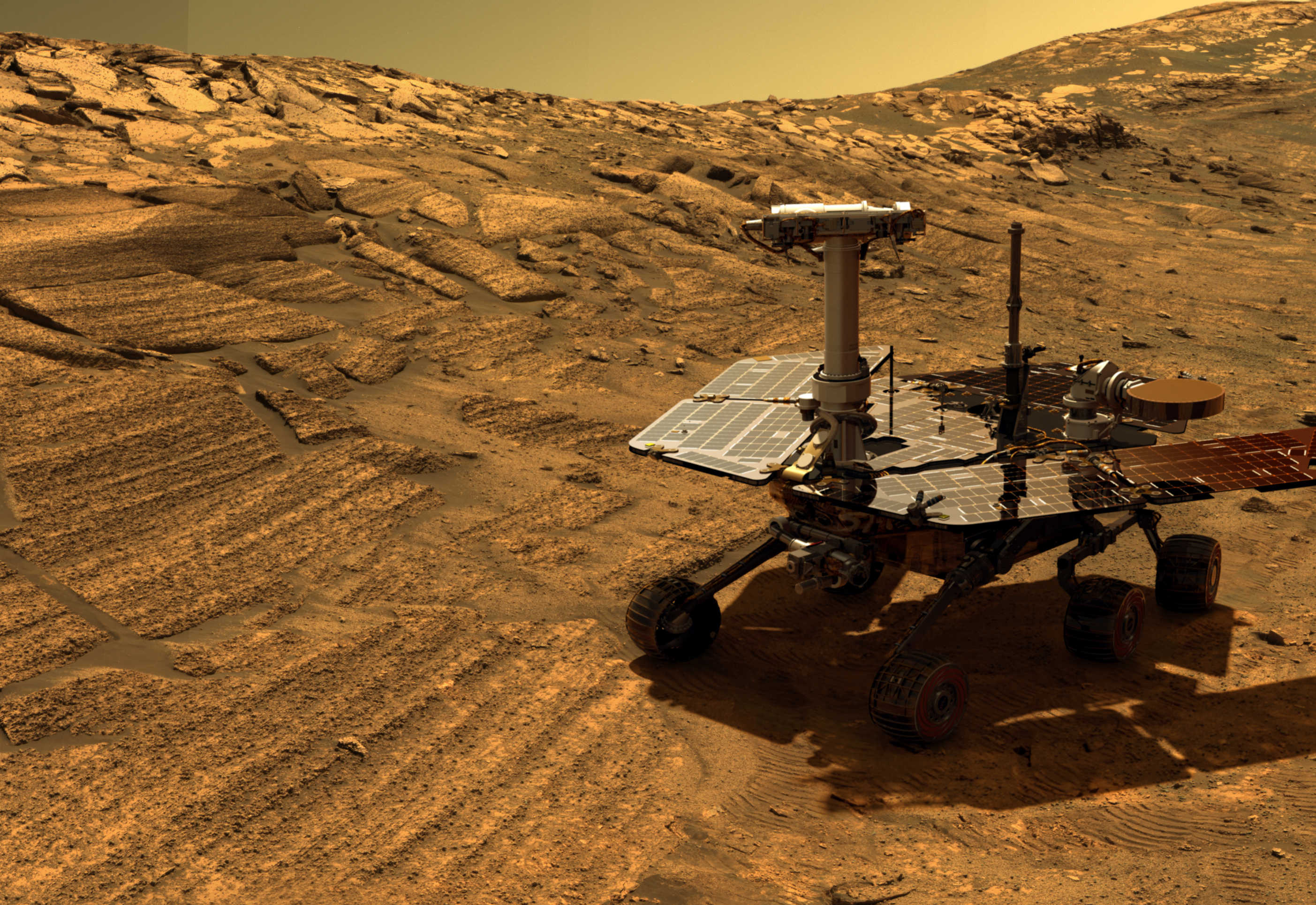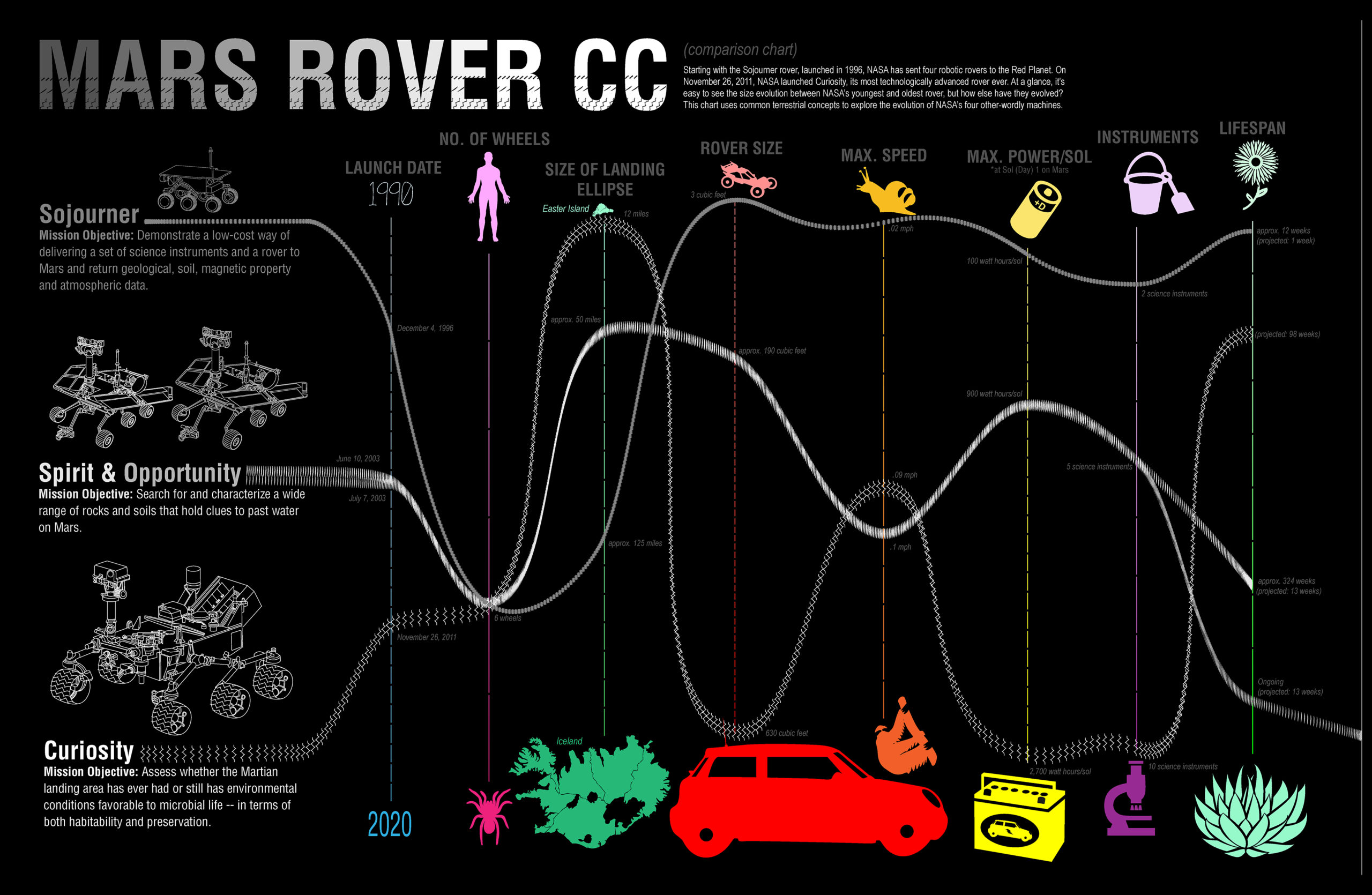
Nine years ago, NASA’s pair of identical Martian sisters – Spirit & Opportunity – bounced to daunting airbag-cushioned landings on opposite sides of the Red Planet for what was supposed to be merely 90 day missions.
Today, Opportunity celebrates a truly unfathomable achievement, entering Year 10 on Mars since she rolled to a bumpy stop on January 24, 2004. Now she’s at a super sweet spot for science loaded with clays and veined minerals and making the most remarkable findings yet about the planets watery past – building upon a long string of unthinkable discoveries due to her totally unforeseen longevity.
“Regarding achieving nine years, I never thought we’d achieve nine months!” said Principal Investigator Prof. Steve Squyres of Cornell University. “Every sol is a gift for our priceless assets on Mars.”
As of April 1, Opportunity has exceeded 3200 Sols, or Martian days. She is now 111 months into the three-month primary mission – that’s 37 times longer than the 90 day “warranty.” The rover remains healthy, has snapped over 178,000 images and driven over 22 miles – marking the first overland expedition on another planet.
The resilient, solar powered Opportunity robot is roving around Martian terrain where she proved that potentially life sustaining liquid water once flowed billions of years ago when the planet was warmer.
She is investigating the inboard edge of Cape York – a hilly segment of the eroded rim of 14 mile (22 km) wide Endeavour Crater, featuring terrain with older rocks than previously inspected and unlike anything studied before. It’s a place more than three billion years old that no one ever dared dream of reaching prior to launch in the summer of 2003.
Opportunity has accomplished breakthrough science by finding deposits of phyllosilicates – clay minerals stemming from an earlier epoch when liquid water flowed on Mars eons ago and perhaps may have been more favorable to sustaining microbial life because they form in more neutral pH water. They have never before been analyzed up close on the Martian surface; and have also just been discovered by NASA’s new Curiosity rover at Gale Crater.
“We have found phyllosilicates at the Whitewater Lake area around Cape York, said Squyres. “It’s like a whole new mission since we arrived at Cape York.” Opportunity also discovered additional hydrated mineral veins at Whitewater Lake, in addition to those found earlier at a spot named Homestake.
Opportunity will continue to explore around the crater rim.



